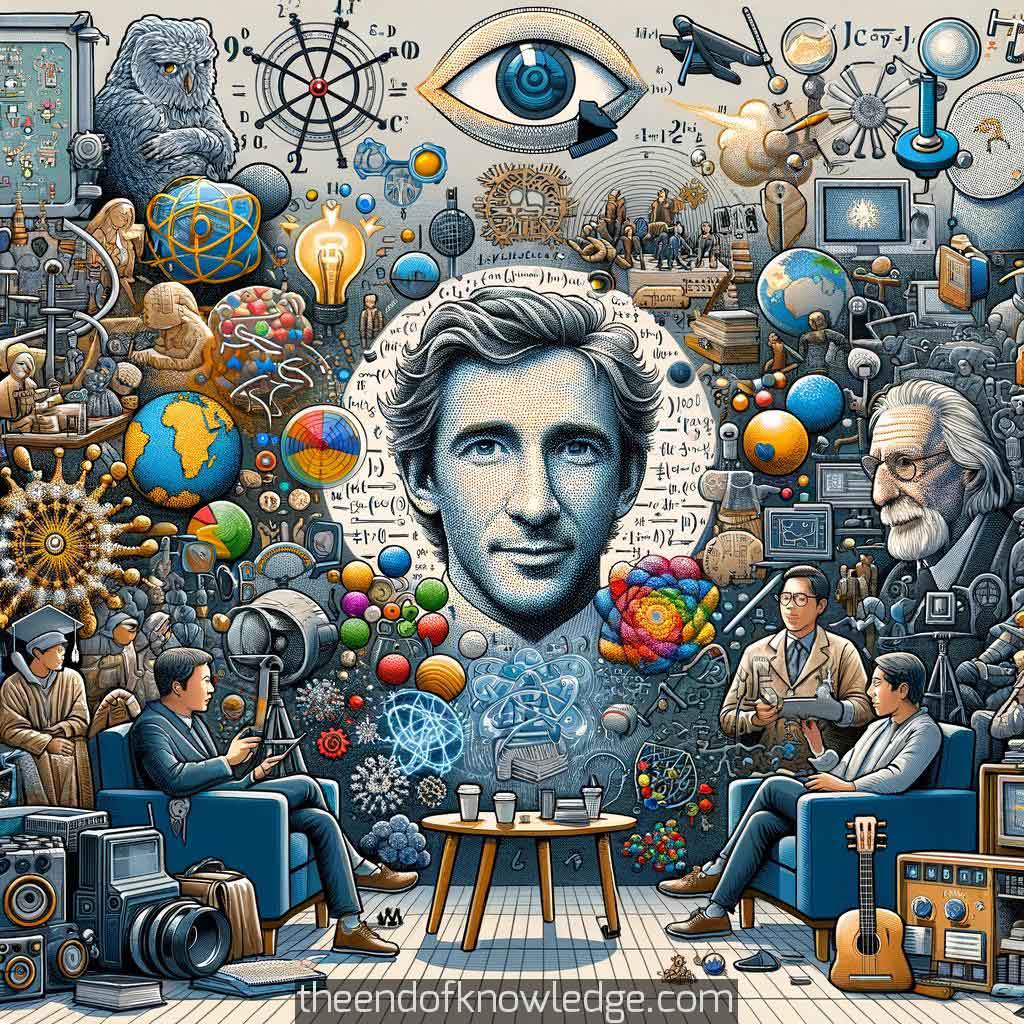 >
>
Concept Graph (using Gemini Ultra + Claude3):
Custom ChatGPT resume of the OpenAI Whisper transcription:
1.- Introduction and Overview: The interview with Grant Sanderson, known for his 3Blue1Brown YouTube channel, highlights his efforts in making complex mathematical concepts accessible and engaging. Sanderson's work is not only educational but also inspirational for students, teachers, and anyone interested in math.
2.- Pandemic's Effect on Education: The pandemic has pushed educators to rethink their teaching methodologies. Sanderson's innovative approach to explaining difficult mathematical concepts serves as inspiration for educators striving to adapt to new teaching environments.
3.- Grant Sanderson's Influence and Methodology: Sanderson is celebrated for distilling complex mathematical ideas into understandable and visually engaging content. His ability to clarify these concepts has made a significant impact on both education and content creation in the mathematical domain.
4.- Role of Educational Content During Crises: Amidst various global challenges, high-quality educational content, like that produced by Sanderson, is viewed as a beacon of hope and a source of reliable knowledge and inspiration.
5.- Influence of Richard Feynman: Sanderson discusses the profound impact Richard Feynman has had on him, particularly Feynman's ability to simplify and communicate complex scientific ideas in an engaging manner. Sanderson admires Feynman's deep connection with mathematics and physics, despite public perceptions of Feynman as non-mathematical.
6.- Personal Approach to Problem Solving: Sanderson shares his approach to learning and problem-solving, which involves a degree of rediscovery and personal interpretation of problems. This method, while time-consuming, leads to a deeper understanding and ownership of the material.
7.- Comparing Learning Styles: The conversation shifts to discuss the benefits of being a generalist versus a specialist in research and learning. Sanderson identifies with being more of a generalist, exploring a broad range of topics rather than specializing deeply in one.
8.- Educational Contributions: Despite not making new discoveries in mathematical fields, Sanderson believes in the value of his expositional work. He aims to clarify and explain existing concepts in ways that are accessible and engaging to a wider audience.
9.- The Role of Visualization in Learning: Sanderson and the interviewer discuss the importance of visualization in understanding complex concepts. Sanderson emphasizes the potential for interactive elements in educational content, although he acknowledges that most of his videos are non-interactive.
10.- Innovations in Educational Content: The discussion highlights the innovative ways Sanderson creates educational content, using visualizations to explain complex mathematical and scientific concepts. This method is likened to conducting research, as it reveals new insights and understandings.
11.- Solo Work and Collaboration: Grant Sanderson expresses a preference for solo work due to personal quirks, finding it easier to critique and discard his own work than to collaborate closely with others. He highlights the challenges of self-doubt and how it can be paralyzing, yet he sees solitary work as a way to navigate through these doubts effectively.
12.- Creative Process and Self-Doubt: Discussing the creative process, Sanderson shares insights into the internal struggles he faces, such as determining when a visualization or script is too long or too short. He emphasizes the solitary nature of his work, preferring to work alone while still valuing the exchange of ideas in a collaborative environment.
13.- Interactions with Don Knuth and Influence: The conversation touches on Sanderson's admiration for Don Knuth, emphasizing the importance of working through problems alone and the value of struggling through the creative process. This reflects on Sanderson's approach to problem-solving and learning.
14.- Productive Routine and Overcoming Writer’s Block: Sanderson describes his ideal productive day, including waking up early, exercising, and turning off the internet to focus on scripting. He offers personal strategies for overcoming writer's block, such as reading something different to refresh the mind.
15.- Educational Content Creation Challenges: The discussion delves into the challenges of creating educational content, including the difficulty of scripting and the pressure to continually produce high-quality material. Sanderson shares his approach to tackling these challenges, highlighting the importance of persistence and adaptation.
16.- Impact of Visuals in Educational Content: The conversation explores the significant impact of visuals in enhancing educational content, particularly in mathematics. Sanderson discusses the potential of integrating interactive elements into his videos, despite the current non-interactive nature of his content.
17.- Lockdown Math and Live Streaming: Reflecting on the pandemic, Sanderson shares his experience with "Lockdown Math," a series of live streams aimed at engaging students in mathematics during lockdown. He discusses the challenges and rewards of live streaming, emphasizing the interactive aspect and the potential for real-time feedback from viewers.
18.- Technological Integration in Teaching: Sanderson discusses the integration of technology in teaching, particularly the use of broadcasting software like OBS with Zoom to create more engaging and professional-looking online lessons. He shares insights on how simple technological enhancements can significantly improve the quality of online education.
19.- Content Creation as a Tool for Educators: The conversation shifts to the potential for educators to become content creators during the pandemic, highlighting the benefits of sharing educational materials online. Sanderson advocates for the creation of high-quality, accessible educational content, suggesting that this could transform traditional teaching methods and enhance learning experiences.
20.- The Future of Educational Content: Sanderson envisions a future where educational content is widely accessible and efficiently shared among students and educators. He discusses the concept of "commoditizing explanation," aiming for a scenario where students can access the best explanations online, freeing up classroom time for more interactive and personalized learning experiences.
21.- Exploration of Theoretical Physics: The interview delves into discussions on geometric unity, proposed by Eric Weinstein, and Stephen Wolfram's hypergraph theory as contemporary theories of everything in physics. Sanderson expresses skepticism about the general public's focus on theories of everything, suggesting a deeper engagement with accessible scientific phenomena might be more enriching.
Interview byLex Fridman| Custom GPT and Knowledge Vault built byDavid Vivancos 2024